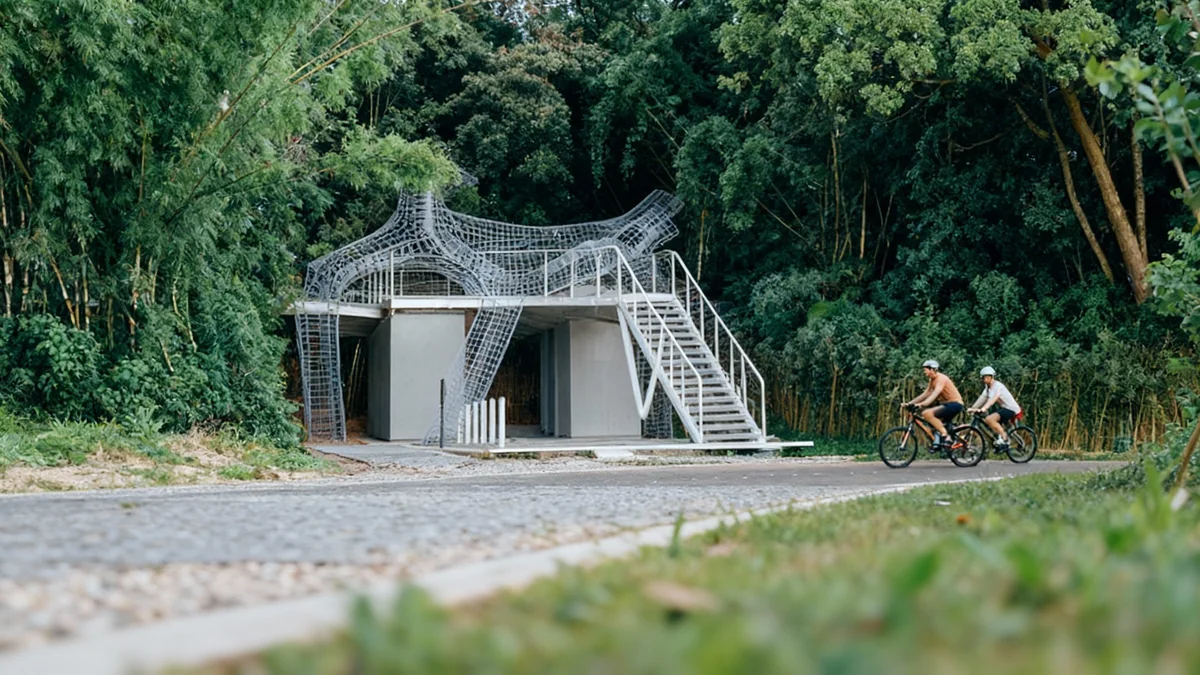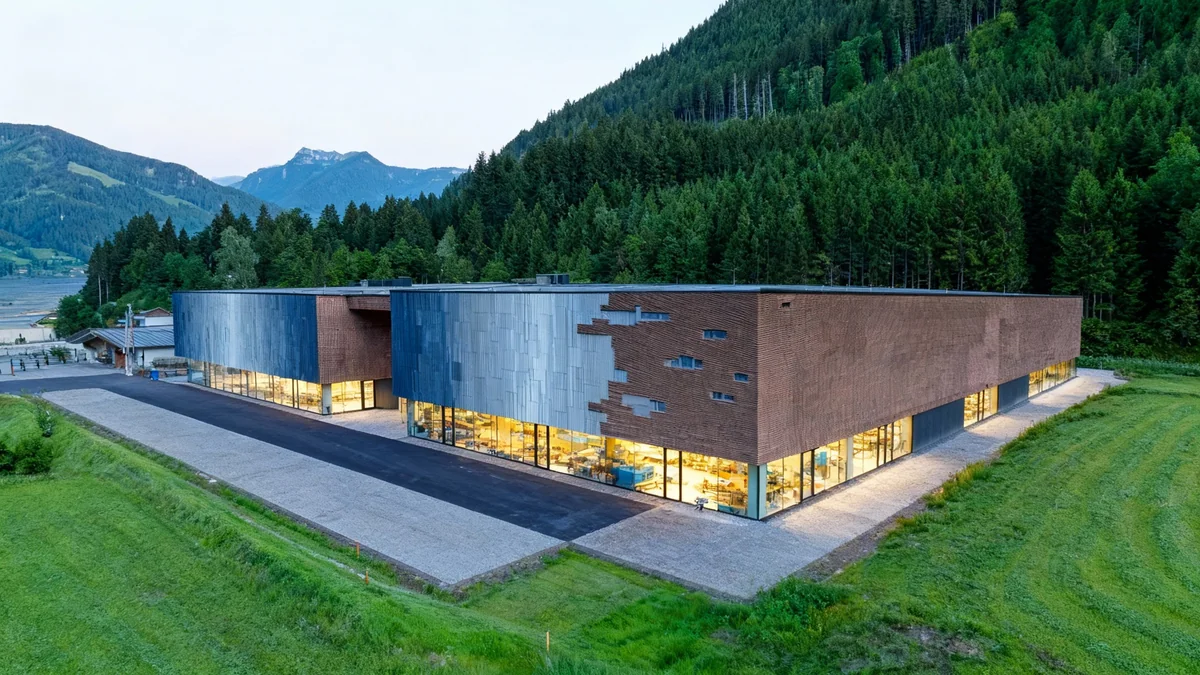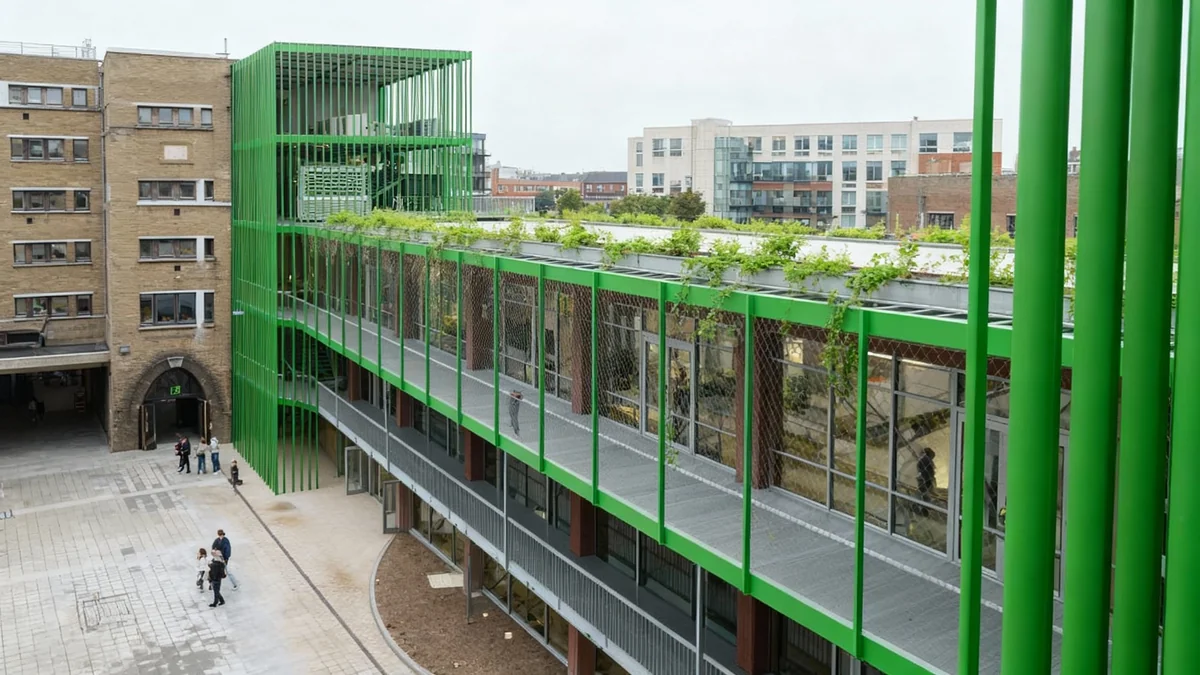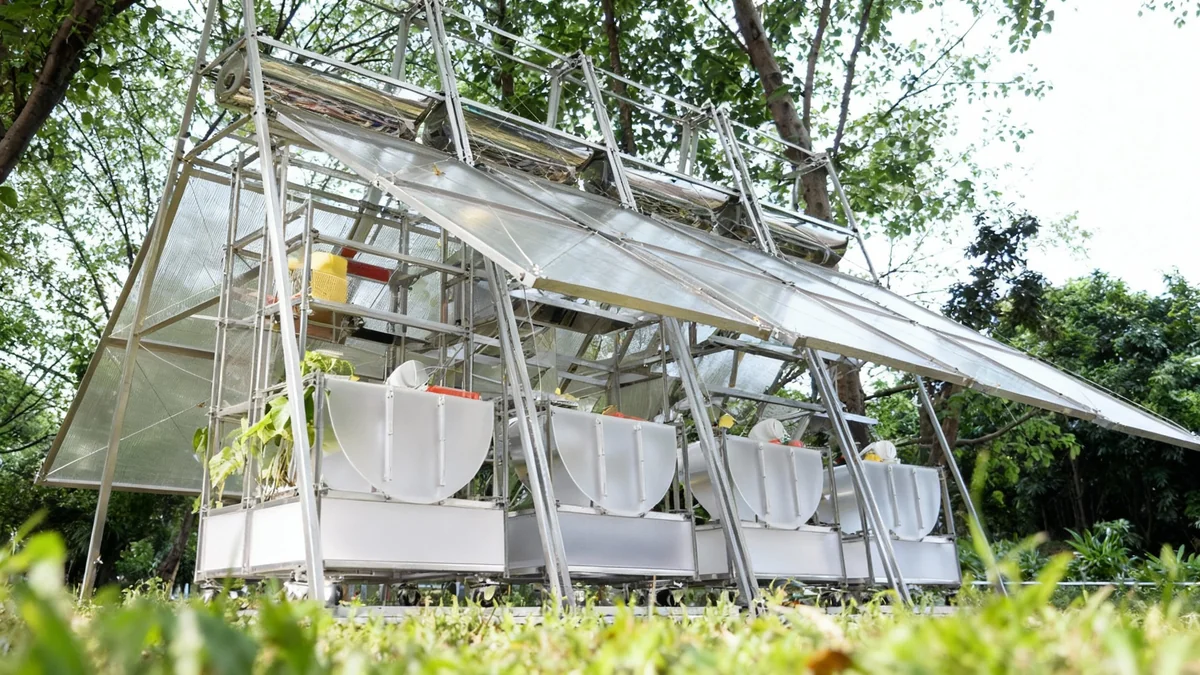A new public rest stop featuring a series of floating canopies has opened for bicyclists near Luofu Mountain in Huizhou, China. This innovative design integrates architecture, art, and ecology to provide a tranquil pause point within a native woodland setting, replacing older infrastructure with a modern, environmentally sensitive facility.
Key Takeaways
- New rest stop for bicyclists in Huizhou, China, offers a unique blend of architecture, art, and nature.
- Seven translucent canopies create a 'Floating Canopy Grove' providing shelter and a dynamic play of light.
- The facility includes a café, restrooms, and a viewing platform overlooking Xiangang Reservoir.
- Prefabricated modular units ensure rapid assembly and minimal environmental impact.
- A dual wastewater treatment system highlights the project's ecological commitment.
Innovative Design Embraces Natural Surroundings
The Floating Canopy Grove project is situated within dense woods next to Guoqian Village. This location is near Xiangang Reservoir, close to the scenic Luofu Mountain. The goal was to create a place of reflection for cyclists, blending functional amenities with an artistic and ecological approach.
The site previously housed two outdated public restrooms. The new design reimagines this space as a comprehensive woodland rest station. It offers a small café, modern restroom facilities, and areas for recharging, catering to the increasing needs of bicyclists in the region.
Project Facts
- Area: 36 square meters
- Completion Year: 2025
- Location: Huizhou, China
- Primary Function: Bicyclist rest stop with café and restrooms
The Floating Canopies: Structure and Experience
Central to the design are seven translucent canopies. These structures appear to float gently among the trees, creating a distinctive visual effect. They are constructed from PTFE/Ferrari membrane stretched over steel frames, allowing them to be lightweight and durable.
The canopies are suspended at varying heights and angles. This arrangement forms an artificial layer above the forest floor, offering shelter from the elements. The design intentionally echoes the layered rhythms of the surrounding forest, creating a constantly shifting experience of light, shade, and space for visitors.
"The canopies offer shelter while echoing the layered rhythms of the surrounding forest, creating a shifting experience of light, shade, and space."
A steel-grated boardwalk weaves through the trees and beneath the canopies. This pathway connects the various areas of the rest stop, including the café and restroom facilities. At its far end, the boardwalk opens onto a viewing platform, providing expansive views of the nearby Xiangang Reservoir. This feature extends the experience beyond basic utility, immersing visitors in the natural landscape.
Context: Luofu Mountain Area
Luofu Mountain is a well-known scenic and cultural area in Huizhou. It attracts many visitors, including a growing number of outdoor enthusiasts and bicyclists. The development of dedicated rest stops like the Floating Canopy Grove supports sustainable tourism and improves visitor experience in natural settings.
Sustainable Construction and Artistic Integration
The café component of the rest stop uses the Plugin House system, a prefabricated modular construction method. This system, developed by People's Architecture Office, allows for rapid assembly. Paired with prefabricated modular restroom units, the entire infrastructure is compact and efficient. This approach enables delicate embedding within the natural environment while maintaining a minimal footprint.
The station provides essential amenities for bicyclists. These include rest areas, refreshments, sanitation, and basic repair facilities. The use of prefabricated elements significantly reduces construction time and disruption to the natural ecosystem.
Artistic Elements Enhance the Space
Above the restrooms, an art installation by artist Ziwei Xu adds another dimension to the project. Titled 'Lightwoven Forest,' this piece responds directly to the canopy structure. It is composed of woven materials that interact with shifting light throughout the day. This interaction transforms the space into a poetic and atmospheric zone, blurring the lines between functional infrastructure and public art.
- Rapid Assembly: Utilizes prefabricated modules for quick construction.
- Minimal Footprint: Designed to have low impact on the environment.
- Integrated Art: Features a light-responsive installation by Ziwei Xu.
Environmental Responsibility at its Core
Environmental protection is a key aspect of the Floating Canopy Grove. The project incorporates a dual wastewater treatment system. This system includes both an underground purification tank and an open-air sedimentation pool. This advanced treatment method helps to protect the water quality of the Xiangang Reservoir.
This closed-loop ecological approach reflects a careful balance. It considers human presence within natural systems. By replacing aging, less efficient infrastructure with a sensitive and spatially rich design, the Floating Canopy Grove becomes more than just a stop. It invites visitors, including bicyclists and others, into a quiet dialogue between modern architecture and the surrounding forest. The project represents a forward-thinking model for public amenities in natural areas.
The facility is expected to be fully operational in 2025, offering a new standard for recreational infrastructure that respects and enhances its natural setting. This initiative demonstrates how thoughtful design can meet public needs while prioritizing ecological preservation and artistic expression.




